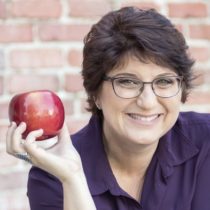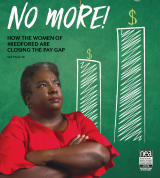Welcome back to school (BTS)! Maybe by the time you read this, you will already have gone to your BTS breakfast, seen some keynote or other, and set up your classrooms.
Maybe you’ve hung some new posters, or added a new beanbag to your reading nook. Maybe you’ve been given your student rosters, learned about the Individualized Education Program and 504 plan goals, strategized about how to implement the new textbook, translated this year’s parent letter into various home languages, or updated your classroom website with pictures from your summer.
I’m hoping you have returned refreshed and ready to embrace the new family of students that you will be given this school year.
Maybe you spent the summer building your toolbox and learning new strategies, or maybe you did the equally important task of taking care of your own brain’s wellness and needs.
But why stop there? Why carve time out for your own wellness only during the summer? Why not make it a focus for you this school year as well?
Addressing Your Needs Addresses the Needs of the Job
One of the best ways we can take care of ourselves is to continue our own learning. And one of the most effective and successful ways we can teach learning and knowledge acquisition to our students is to model it ourselves. In other words, by continuing our own growth throughout the school year, we not only address our own needs, but the needs of the job itself. I think about Merlin’s quote from T.H. White’s book, The Once and Future King (a quote which hung in my living room growing up):
“The best thing for being sad,” replied Merlin, beginning to puff
and blow, “is to learn something. That’s the only thing that never
fails. You may grow old and trembling in your anatomies, you may lie awake at night listening to the disorder of your veins, you may miss your only love, you may see the world about you devastated by evil lunatics, or know your honour trampled in the sewers of baser minds. There is only one thing for it then—to learn. Learn why the world wags and what wags it.
That is the only thing which the mind can never exhaust, never alienate, never be tortured by, never fear or distrust, and never dream of regretting. Learning is the only thing for you.”
So as this school year starts, don’t just think about how you are going to teach, but what you are going to learn. Are you going to take a class totally out of your wheelhouse?
Are you going to do one of those wine-and-painting classes with friends or perhaps monthly go to a local museum and walk around with the audio tour? Maybe you’ll just pick up a book about a subject you know nothing about.
Regardless, the goal for this school year is to continue your own learning and nurture your own brain so that you can nurture your students’ as well. Learning keeps us engaged in life and in this difficult profession.
Being the Model Learner in the Classroom
When teachers are engaged, that trickles down to students. When students are engaged, their achievement not only increases, but classroom management issues decrease.
When achievement rises and issues decrease, it is easier for teachers to go deeper into curriculum as well as form relationships with students.
Meaningful curriculum plus meaningful relationships between teachers and students positively impact achievement, and teacher engagement is, of course, triggered again. And so on.
Tell Me About Your Engagement Goals and Ideas
This school year, I really want to focus this column on my fellow teachers and their engagement as learners. After all, as teachers, we are the models in the classroom. And if our primary goal is to help raise generations
of curious learners, then the best way to do that is to nurture our own curiosity and model learning ourselves.
 Heather Wolpert-Gawron
Heather Wolpert-Gawron
Learning impacts our own wellness so it’s vital that we continue doing it ourselves. We deserve it.
So here’s what I’m going to do this year: I’m going to learn about you and what you find engaging. Then, I’m going to report back. Begin by filling out this survey.
It shouldn’t take you more than 10 minutes or so, and I will share the trends in the results in a later post. Please also feel free to share the survey via Twitter or other social media. The survey closes on December 31, 2019.
Continue to check back here for ways to engage both you and your students as lifelong learners. Who knows? Maybe I’ll feature you and your best professional development experience in an upcoming column for our readers to celebrate and learn from. Meanwhile, I hope throughout this school year that I can feed you with advice, humor, and understanding. Let’s make this profession, a darn hard profession, more engaging and effective together.
Heather Wolpert-Gawron is a teacher at Jefferson Middle
School in San Gabriel, Calif., and the author of Just Ask Us:
Kids Speak Out on Student Engagement.







